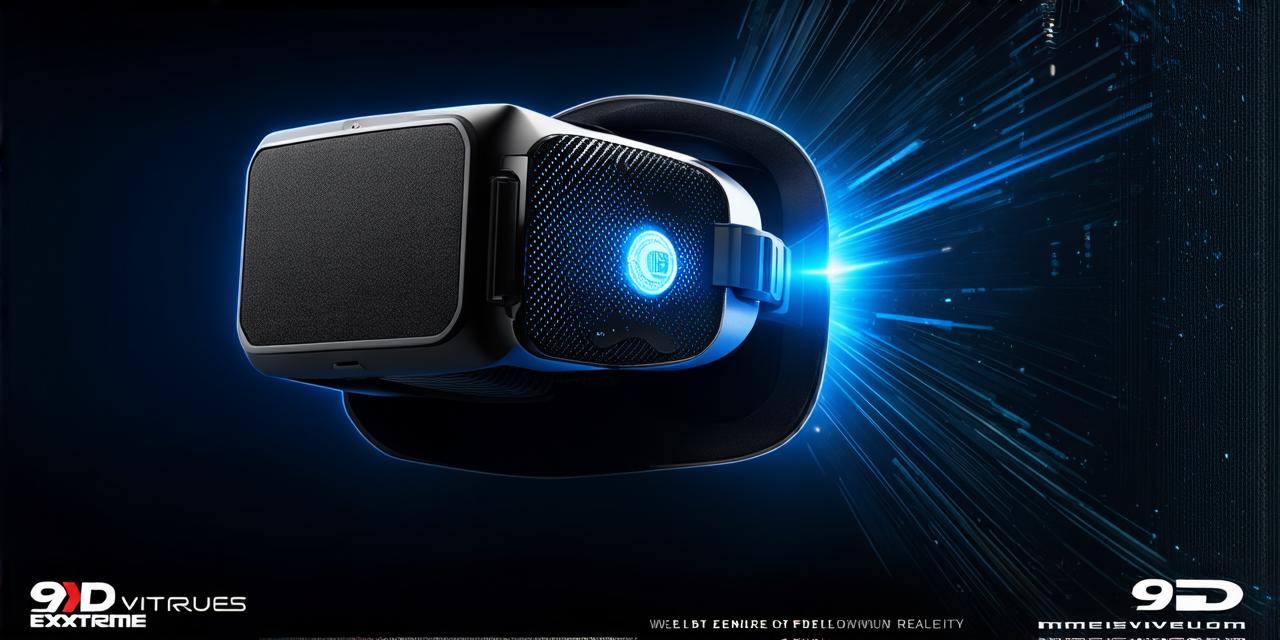What is a 9D Virtual Reality Simulator?
A 9D virtual reality simulator is a device that uses nine sensors to track the user’s movements in real-time. This allows for a more realistic and immersive experience than traditional VR devices, which typically only use six sensors. With 9D VR, users can move around freely and interact with their environment in ways that were previously impossible.
Training
One of the main benefits of a 9D virtual reality simulator is its ability to provide immersive training experiences. For example, pilots can use a 9D VR simulator to practice flying in a safe, controlled environment. Similarly, military personnel can use 9D VR to simulate combat scenarios and develop their strategic thinking skills. By using a 9D VR simulator for training purposes, individuals can gain valuable experience without risking their lives or putting others at risk.
Education
A 9D virtual reality simulator can also be used as an educational tool to teach students about various subjects in an interactive and engaging way. For example, medical students can use a 9D VR simulator to practice surgical procedures, while history students can explore ancient civilizations in a fully immersive environment. By using 9D VR for education purposes, students can gain a deeper understanding of complex concepts and subjects.
Entertainment
Perhaps the most well-known use case for a 9D virtual reality simulator is entertainment. Gaming companies are already using 9D VR to create highly immersive gaming experiences that allow players to feel like they’re truly in the game world. In addition, movie theaters and amusement parks can use 9D VR simulations to offer unique and exciting experiences for their customers. By providing a fully immersive environment, 9D VR can transport users into new worlds and provide an unforgettable experience.
Therapy
A 9D virtual reality simulator can also be used as a tool for therapy. For example, patients suffering from PTSD or anxiety disorders can use 9D VR to confront their fears in a safe and controlled environment. By exposing themselves to virtual environments that simulate real-world scenarios, patients can learn coping strategies and gradually overcome their fears. In addition, 9D VR can be used for physical therapy, allowing patients to practice movements and exercises in a controlled environment.
Real-Life Examples of 9D Virtual Reality Simulators
One company that has developed a 9D virtual reality simulator is Vuzix. Their device uses nine sensors to track the user’s movements and provide a fully immersive experience. Another company, HoloDeck, has also developed a 9D VR simulator that allows users to move around freely in a completely immersive environment.
Summary
In conclusion, a 9D virtual reality simulator is a powerful tool with a wide range of applications. From training and education to entertainment and therapy, 9D VR has the potential to revolutionize the way we learn, work, and play. As technology continues to advance, we can expect to see even more innovative uses for 9D VR in the future.
FAQs
Here are some frequently asked questions about 9D virtual reality simulators:
1. What is a 9D virtual reality simulator?
A 9D virtual reality simulator is a device that uses nine sensors to track the user’s movements and provide a fully immersive experience.
2. What are some of the main benefits of a 9D virtual reality simulator?
The main benefits of a 9D VR simulator include immersive training experiences, interactive education, entertainment, therapy, and more.
3. How does a 9D virtual reality simulator work?
A 9D VR simulator uses nine sensors to track the user’s movements in real-time, allowing for a more realistic and immersive experience than traditional VR devices.
4. What are some examples of companies that have developed 9D virtual reality simulators?
Two examples of companies that have developed 9D virtual reality simulators include Vuzix and HoloDeck.
